Leaf spot damage from fourlined plant bug a common sight in Michigan gardens
Tips for recognizing and managing fourlined plant bug, a distinctive garden pest.

Various members of our Michigan State University Extension gardening and landscape teams have noticed the distinctive spots associated with feeding damage by the fourlined plant bug (Poecilocapsus lineatus) in their gardens this summer. This is not unexpected. Fourlined plant bug is a very common insect pest in Michigan and the damage becomes very recognizable to experienced gardeners who have identified it before. However, for those who have not yet become aware of the cause of this type of leaf spot, which can appear brown, black or whitish tan depending on the plant, the symptoms can be confusing.
Leaf spots, especially ones so circular, are often associated with fungal disease on plants. From our observations, some differences with fourlined plant bug damage may be the close clustering of the spots and their uniform diameter (1-3 millimeters). While the feeding spots start out distinctive, they may expand within the space between leaf veins or coalesce when the feeding becomes extensive.
This spotty damage is caused by the way the plant bug feeds. It pierces the plant cells with its mouthparts, secretes an enzyme that breaks down the plant cell contents, and sucks up the resulting juices, including the chlorophyll that makes the plants green. The dead plant tissue in the spots may start to dry and fall out after a few weeks. Both nymphs and adult bugs cause equivalent plant injury.
The fourlined plant bug pest has a wide host range (over 250 known species) and will attack many different herbaceous plants, perennials and annuals, as well as woody shrubs and even trees. A favorite snack of this pest are herbs in the mint family (Lamiaceae). Other host plants include zinnia, chrysanthemum, viburnum, rose, forsythia, dogwood, Weigela and others, as noted in the selected references at the end of this article. We hope the photos in this article can help everyone better recognize the damage caused by this pest.
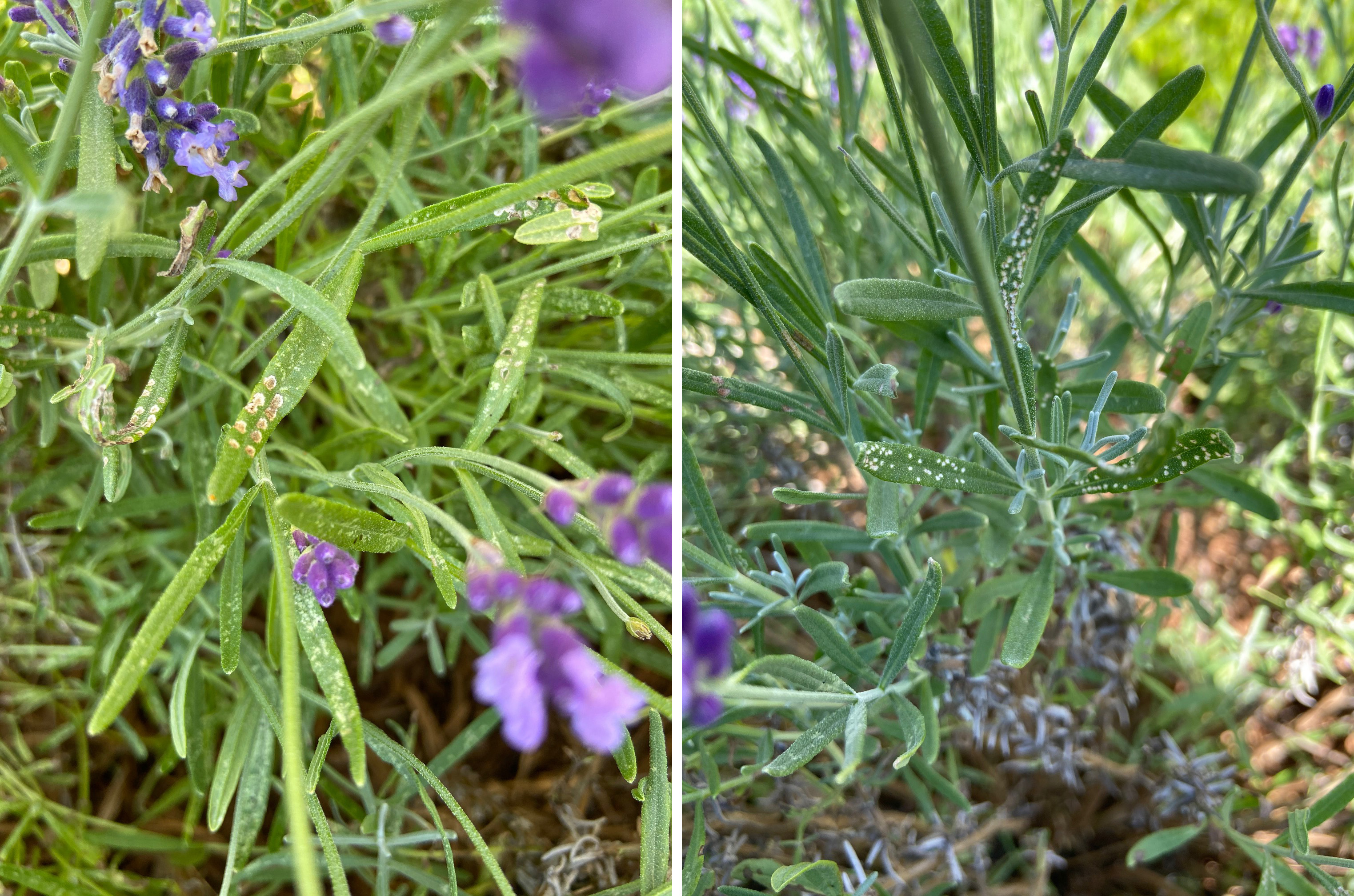

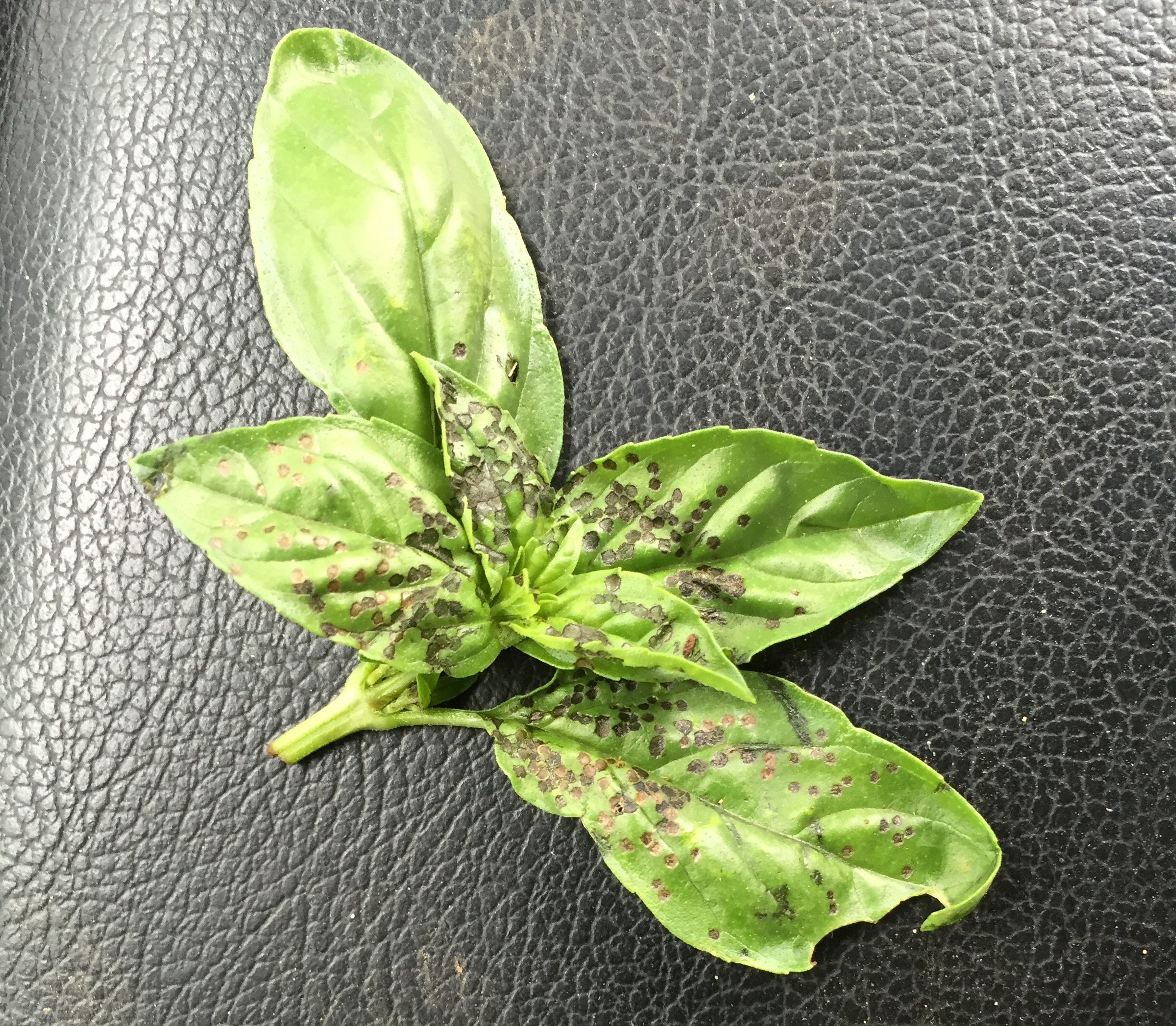
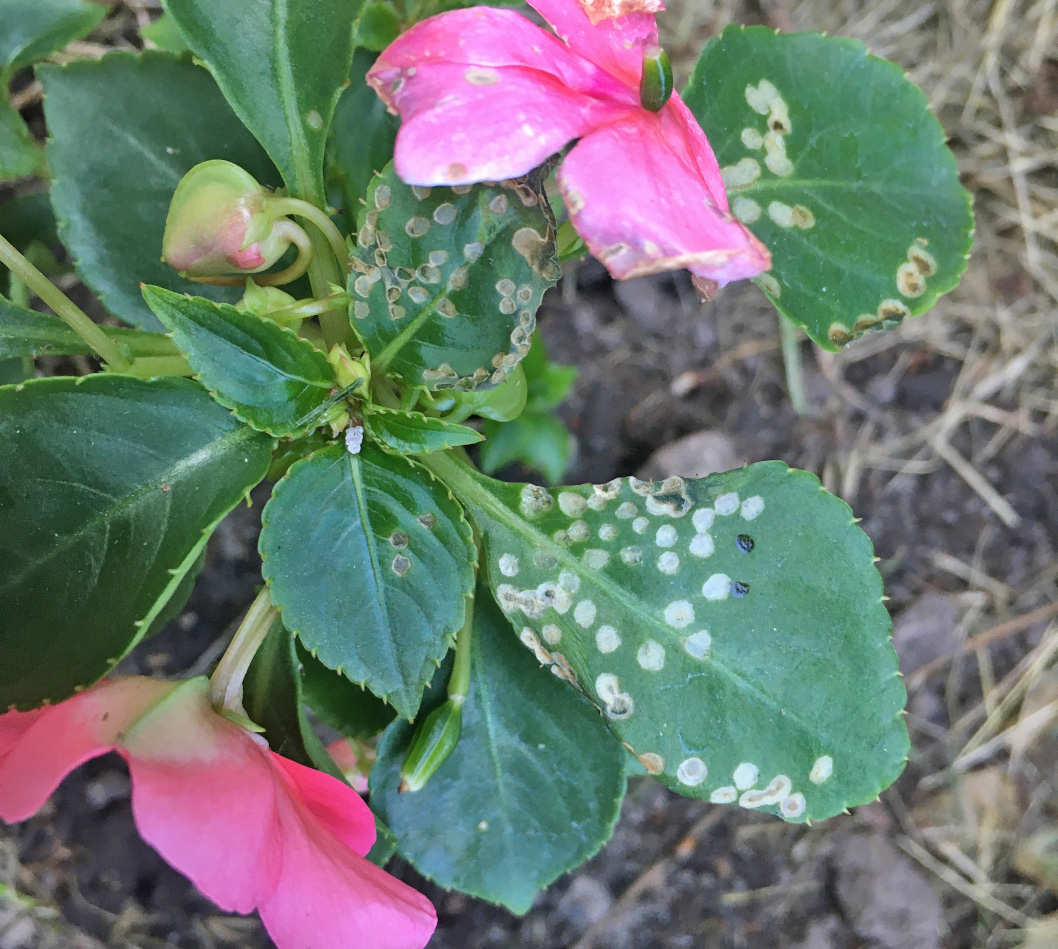
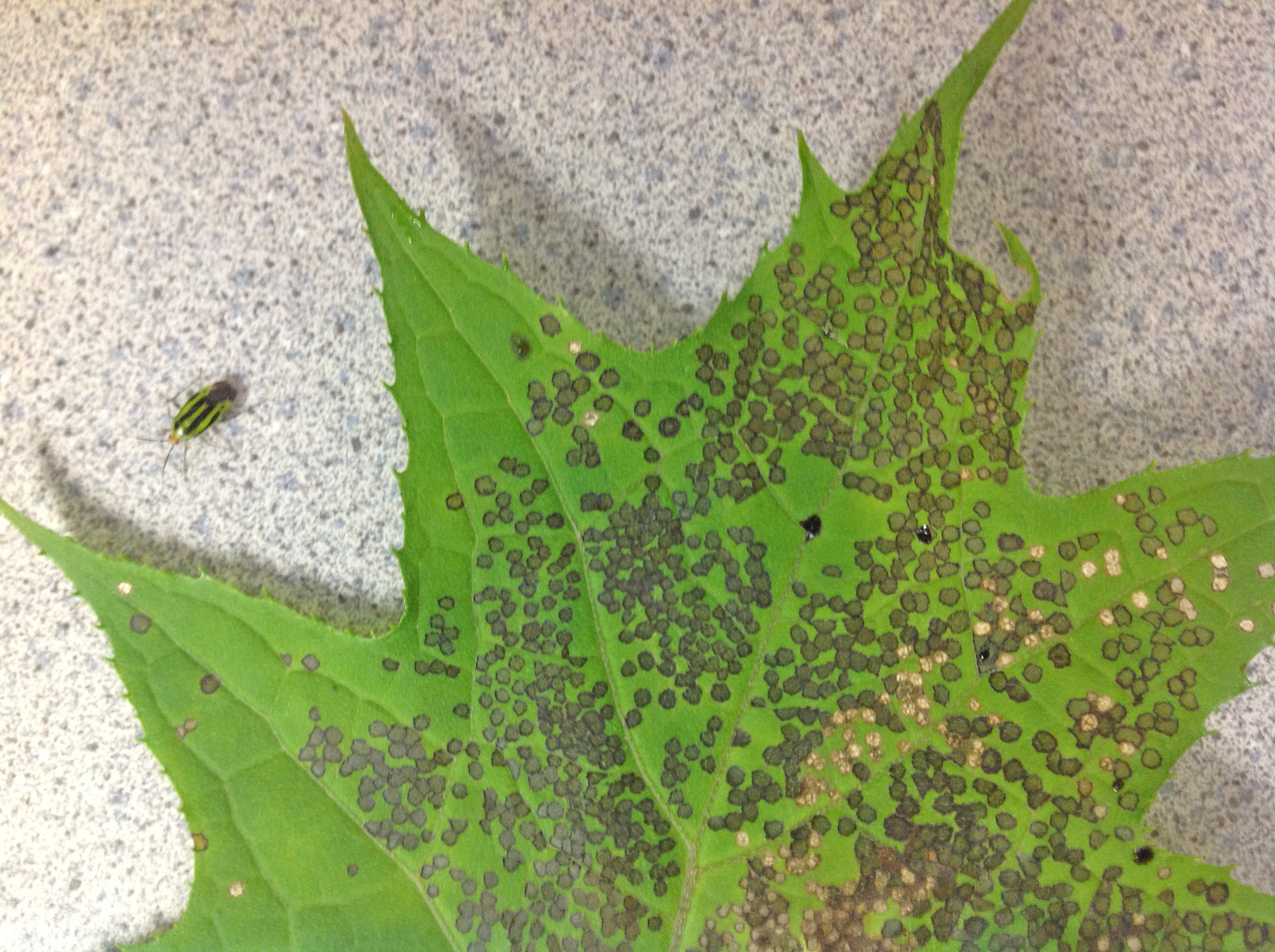
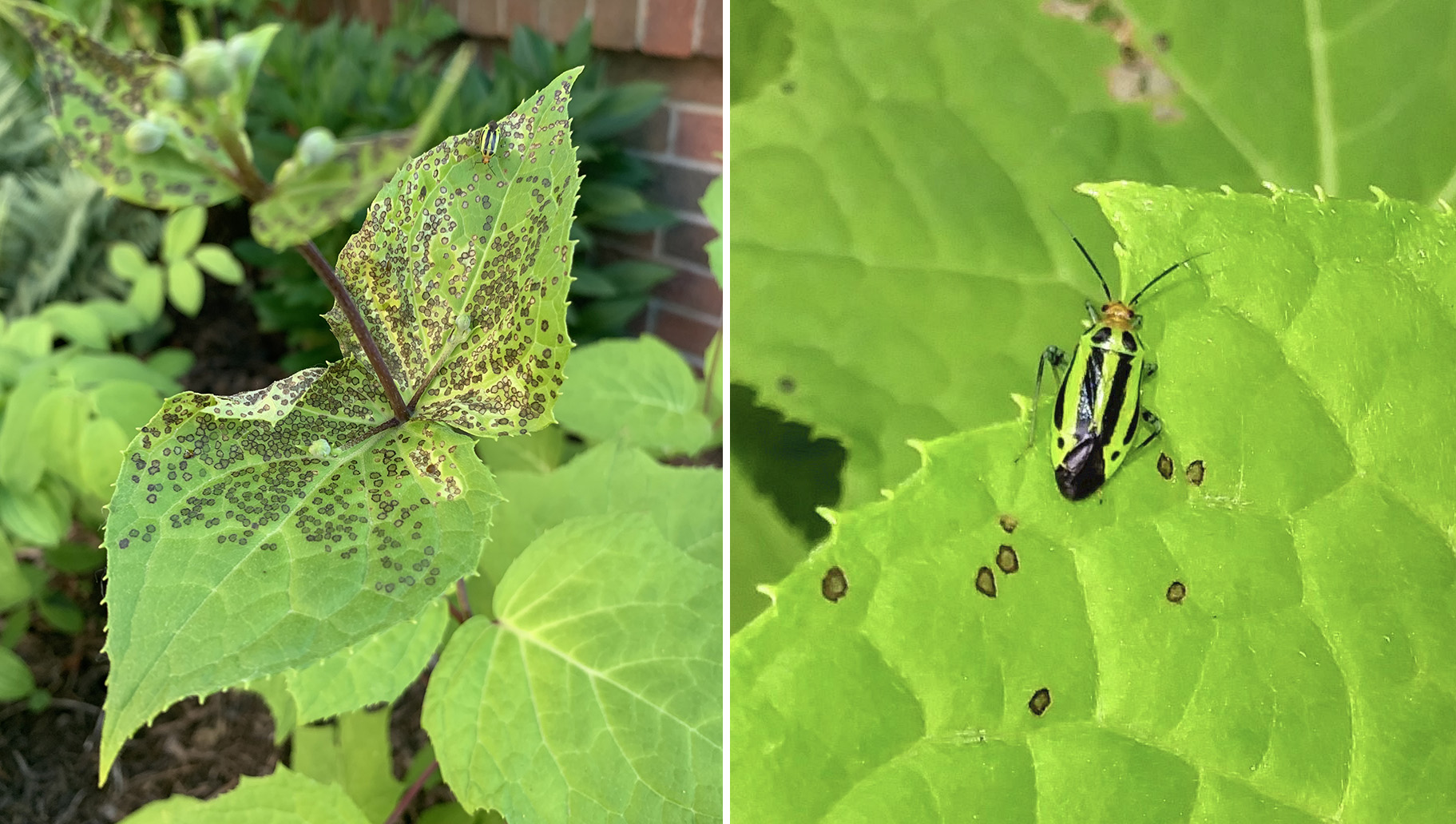
Life cycle and habits
Fourlined plant bugs overwinter as eggs in new shoots or sprouts on their host plants. The red-orange and black nymphs emerge from the eggs in the spring, generally early to mid-May in Michigan, and take about a month to develop into the yellow or green and black adults. The adult bugs are approximately 6 millimeters or 0.25 inches long, with four characteristic black lines on their wings that give them their name.
Adults feed for about six weeks, so they can be found causing damage in Michigan well into July and possibly early August. Given the length of time we find them in our gardens, it may seem like there have been multiple generations at work. To the best of our knowledge, the fourlined plant bug is a univoltine species in Michigan, which means they produce a single brood of offspring each year.
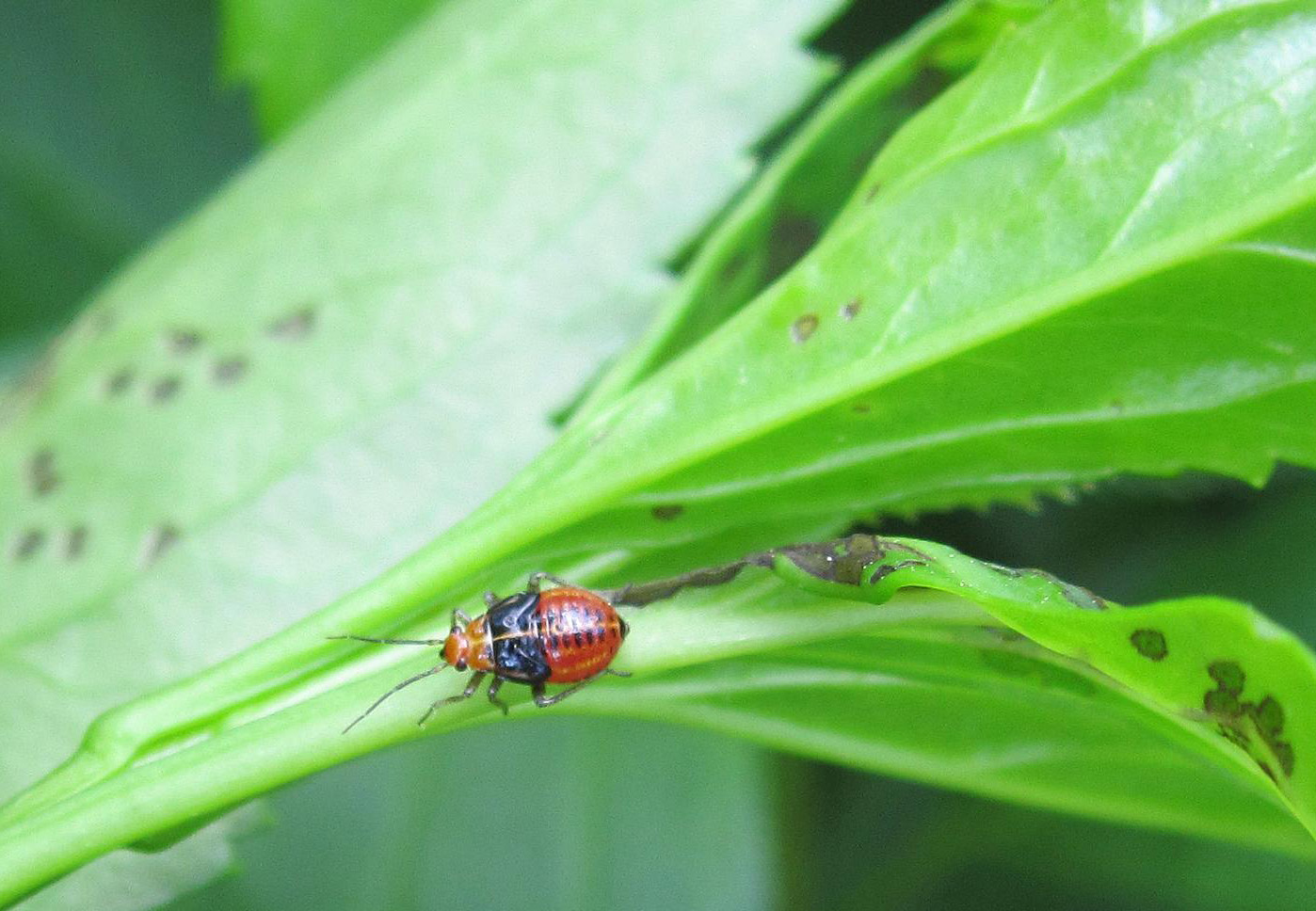
Fourlined plant bugs tend to start by feeding on the fresh new growth of plants. This can cause irregular growth patterns as plant development continues. Fourlined plant bugs are very quick and skittish, so you may not always catch them in action, further leading people to believe that the damage must be a fungal disease since these gardeners often do not see the pest around.
What to do, or not to do, about this pest
Before setting out to manage fourlined plant bugs in the garden, consider whether you can live with the damage. If it’s just a few bugs on a few plants, it might not be worth the time and effort to control them. As long as the damage isn’t too extensive, many plants can easily outgrow their early-season injuries. Nevertheless, if population numbers are high, employ a systems approach with several types of control practices mentioned below.
Cultural control
Because female fourlined plant bugs deposit their eggs inside plant tissue, removing the leftover dead plant material in your garden can help keep populations low. Ideally, this step should happen in the early spring before the eggs hatch. Keeping your garden free of unwanted plants (weeds) will also reduce the number of available nesting sites for plant bug eggs.
Mechanical control
Physically removing bugs can be an effective early season tactic. Throughout spring, walk through your gardens and keep an eye out for the immature stages and their distinctive damage pattern on newer leaves. Pay particular attention to plants in the mint and aster families. Hand-pick any bugs you find or knock them into a container of soapy water. Don’t worry if some of them drop to the ground. Immature stages cannot fly and often have difficulty crawling back up to the top of the plant.
Continue walking through your garden every few days and repeat the procedure. It has been noted that fourlined plant bug eggs do not hatch at exactly the same time. As such, you may find immature stages all through spring and into the early weeks of summer.
Chemical control
Given what we know about natural insect communities and the benefits they provide, consider using mechanical and cultural controls before applying pesticides. Broad-spectrum insecticides are indiscriminate and have the potential to kill non-target arthropods, including spiders, native bees and other beneficial insects. If population numbers are high and the damage becomes unacceptable, then carefully spraying the leaves of infested plants without spraying flowers or surrounding plants can quickly and efficiently reduce the number of fourlined plant bugs in the garden.
Dave Smitley, a professor in the Department of Entomology at Michigan State University, agrees that it is usually unnecessary to spray fourlined plant bugs. “Fourlined plant bugs are usually done feeding around late July, so the damage should start tapering off after that. It is better to let the plant bugs do their thing. Knowing what causes the damage and that it is not a threat to your plants is usually enough.”
For those that need to spray the leaves of a few infested plants, Smitley recommends using bifenthrin, cyfluthrin or carbaryl (Sevin). Horticultural oils and insecticidal soaps are alternatives, but they do not work well on plant bugs after the spray has dried. As always, test an unfamiliar product on a small number of plants and check back in a few days to make sure it hasn’t caused any damage. Avoid spraying open blooms to minimize the impact of pesticides on pollinators.
Selected references
- Chase, A.R., Daughtrey, M.L., and Cloyd, R.A. (2018). Fourlined Plant Bug. In Compendium of Bedding Plant Diseases and Pests (p.122). APS Press.
- Cranshaw, W. and Shetlar, D. (2018). Plant Bugs. In Garden Insects of North America: The Ultimate Guide to Backyard Bugs. (2nd, pp. 294-295). Princeton University Press.
- Johnson, W.T. and Lyon, H.H. (1991). Fourlined Plant Bug and Lygocoris Plant Bugs (Plate 190). In Insects that Feed on Trees and Shrubs. (2nd, revised, pp. 396-397). Cornell University Press.



 Print
Print Email
Email


